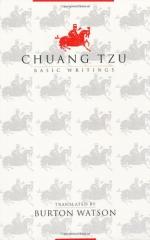|
This section contains 7,812 words (approx. 27 pages at 300 words per page) |

|
SOURCE: Doeringer, Franklin M. “Imaging the Imageless: Symbol and Perception in Early Chinese Thought.” Journal of Chinese Philosophy 20, no. 1 (March 1993): 5-28.
In the following essay, Doeringer compares the theory of symbolic language formulated by twentieth-century French philosopher Paul Ricoeur with the one devised by the authors of the Chuang Tzu, noting that Ricoeur's work is rooted in early Chinese thought.
The “revivification of philosophy through contact with the fundamental symbols of consciousness” which the Hermeneutician Paul Ricoeur so eloquently called for in his Symbolism of Evil has, I believe, particular relevance for the study of traditional Chinese thought.1 Beginning in the Warring States period, a number of Chinese thinkers began to appreciate evocative symbols as a more apt medium to reflect reality than descriptive language. Concluding, like the modern theologian Paul Tillich, that “symbolic language alone is able to express the ultimate,”2 they began to devise a conscious...
|
This section contains 7,812 words (approx. 27 pages at 300 words per page) |

|


